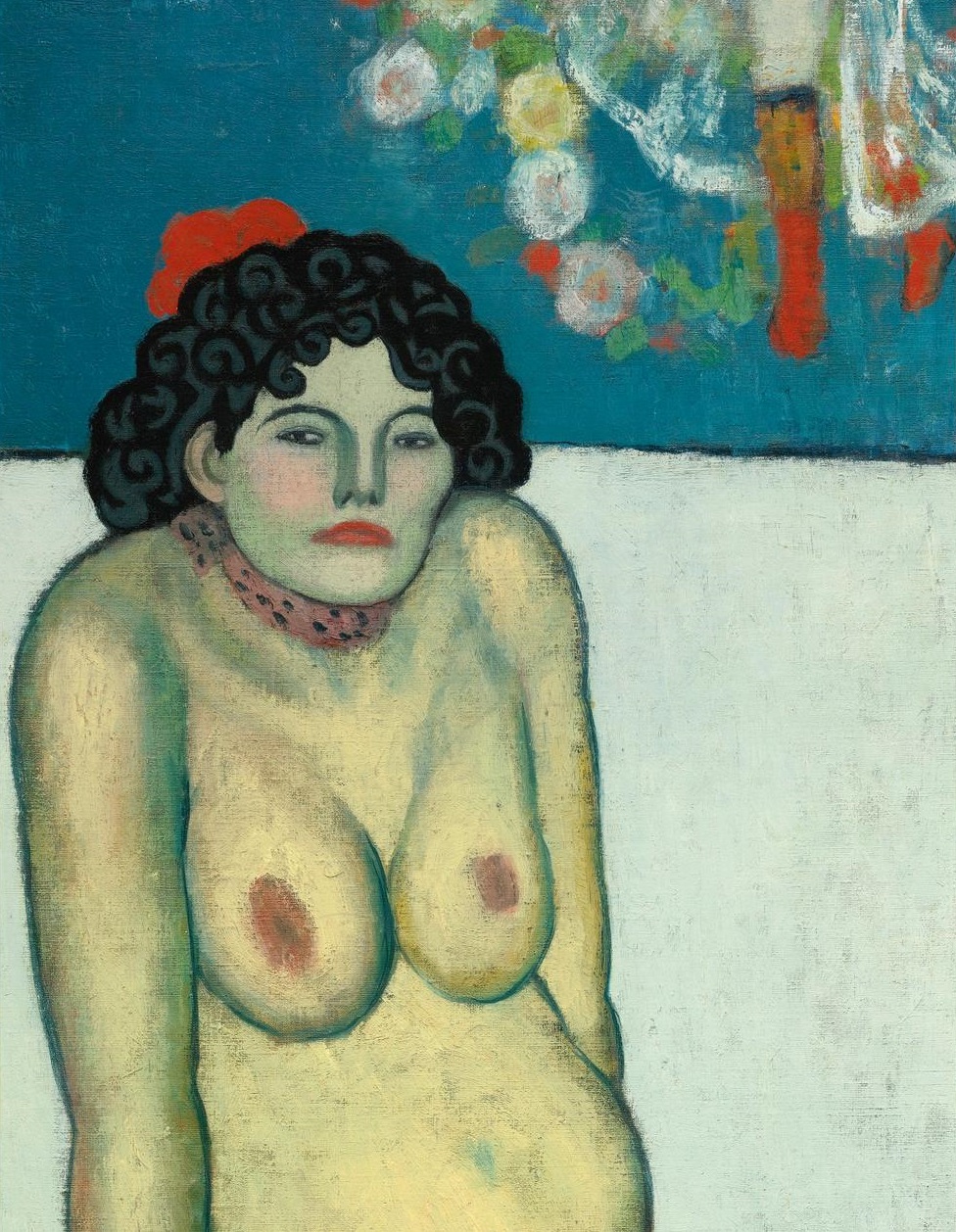art-Picasso.com
Pablo Picasso 1881-1973
©Pablo Picasso - La Gommeuse 1901
 La Gommeuse |
From Sotheby's auction house:
Picasso's extraordinary La Gommeuse is among the rare and coveted pictures created during the artist's Blue Period (1901-1904). The painting dates from the second half of 1901, following Picasso's widely-praised exhibition at Vollard's gallery that June and amidst the sobering aftermath of his friend Casagemas' suicide earlier in the year. Just shy of 20, the artist was sharing an apartment in Paris with his Catalan anarchist friend Pere Mañach, and the two young men immersed themselves in the debauchery of the Parisian demi-monde. This dizzying mixture of professional success and personal tragedy, along with the carnal pleasures of youth and the inexorable sadness of mortality, brought Picasso's creative genius to a climax. Central to this artistic narrative is La Gommeuse, a gorgeous cabaret performer whose very body defines the perverse beauty of the age. Portrayed in an absynthian haze of sexual ennui, she is both temptation and downfall incarnate, a high priestess of melancholy and a siren of joie de vivre.
In recent correspondence with Sotheby's, curator and Picasso historian Marilyn McCully has provided her interpretation of the picture, in which she states that it features an entertainer posed in front of a painting in Picasso's studio. Art historians have also suggested that the composition depicts a cabaret perform in front of a stage, where a dancer appears to be swirling a floral skirt. McCully has expanded on her analysis as follows:
"The painting known as La Gommeuse represents a pivotal moment in Picasso’s artistic development in 1901, the year in which he had his first major exhibition at Ambroise Vollard’s gallery in Paris (24 June-14 July 1901). That show had featured more than sixty paintings and drawings, which reflected the young Spaniard’s immediate response to recent French art. The major influence was Toulouse Lautrec, both in subject matter – café scenes, prostitutes and dance halls – and, to some extent, technique, but Picasso’s subsequent focus on isolated figures and restricted, subdued palettes in his new works emphasized his own exploration of the theme of loneliness and his interest in formal experimentation. The depictions of syphilitic prostitutes and poverty-stricken mothers in his Blue Period of late 1901-1902 was in many ways anticipated in La Gommeuse and works related to it.